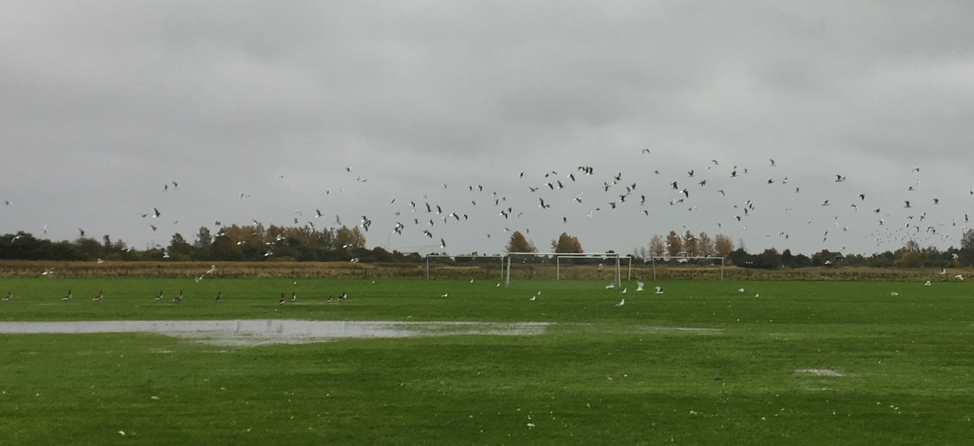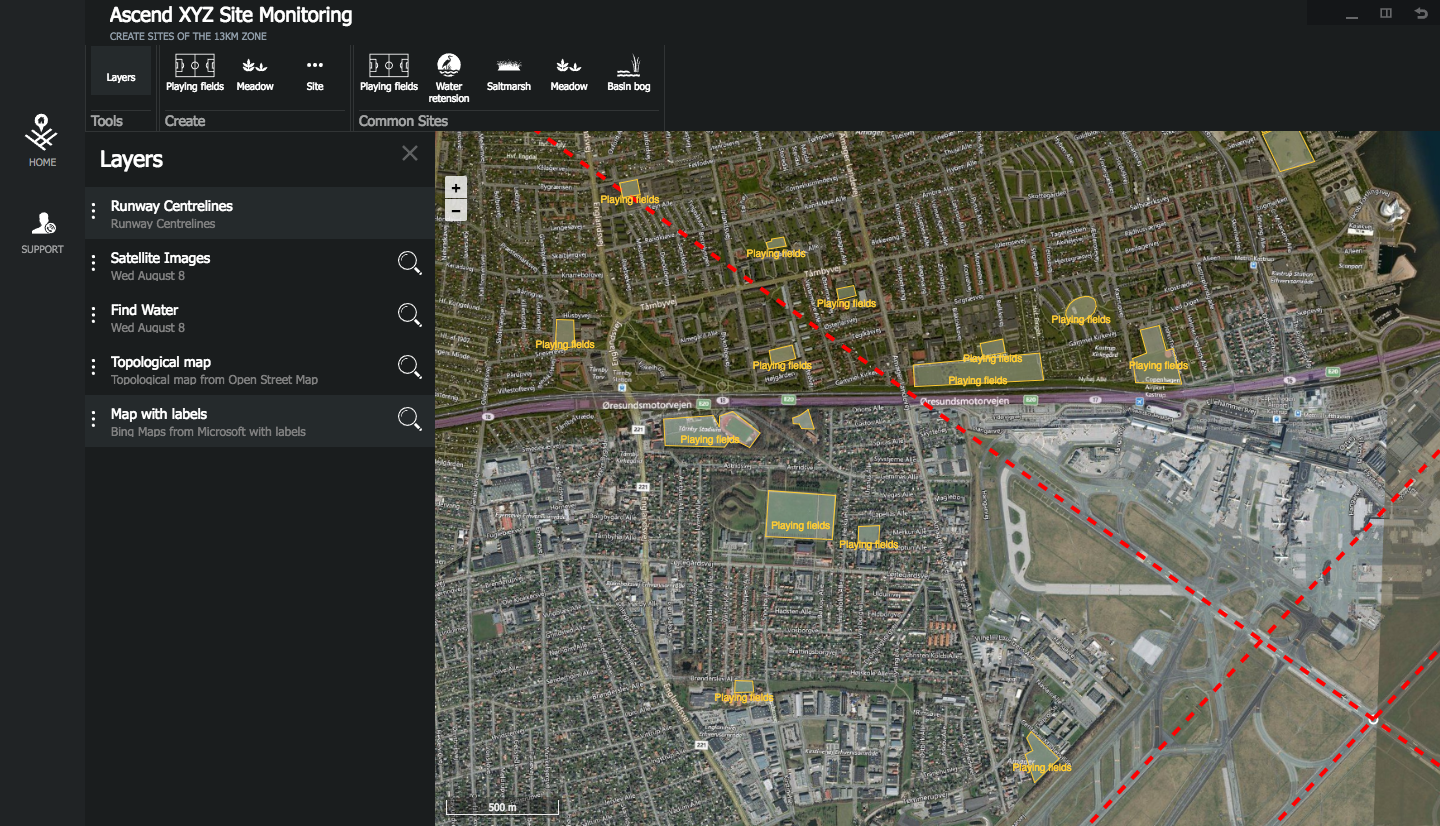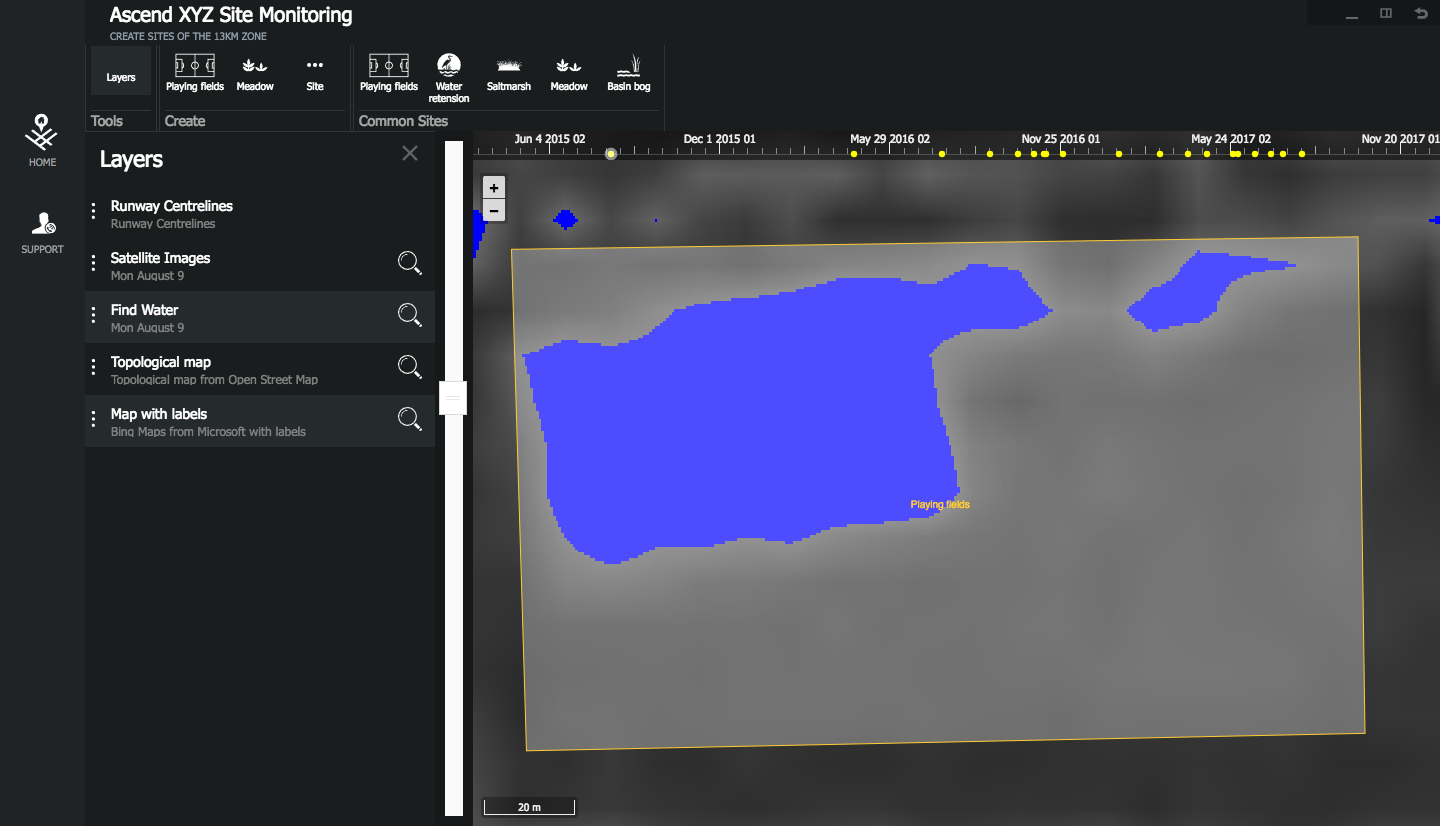Aircraft coming into contact with birds is an expensive and avoidable event. Almost 75% of all these occurrences happen below 500ft during take-off and landing.
In order to reduce the risk of bird strikes, understanding where birds thrive and how this impacts aircraft is key.
With information gathered from wildlife specialists around the world, a number of key habitats likely to attract birdlife (large and small) were identified.
Using Sentinel satellite images and their NDWI system, Ascend XYZ have been working to locate these habitats around airports and take into account the additional factors that can increase bird population and so increase the risk of bird strikes (bodies of water, proximity to runways etc.).
Football fields are everywhere, including the areas surrounding airports, they are also popular with birdlife.

Using weekly updated satellite images from ESA Sentinel series satellites and the NDWI, Ascend XYZ can monitor which of these fields hold water surfaces (proven to attract larger birds such as gulls and geese). Using information from the Federal Aviation Administration and Ascend XYZ’s Site Monitoring systems, it has been possible to map the areas surrounding a runway, the football fields within this area and highlight where birds could be moving from one field to another while crossing the path of the runway below 500ft and hereby increasing the risk of bird strikes.
This information could be used to encourage local governments to take preventative measures to reduce the bird population in these locations. Improving drainage systems on high risk sports fields would discourage larger water birds from roosting there.
Integrating bird radar and EO data into this solution would enable airports to detect wildlife activity more effectively in the high risk habitats. This information can then be used to guide wildlife teams to focus their efforts. It has been documented that the right habitat and wildlife management can lead to an estimated reduction of bird strikes of 50%. (Source: “Fera, Avian Answers - Solution 5. Helping Airports and Wins Farms. Regulation, Research, Response")




